_Location: Perth, Australia
_Company: Hassell | www.hassellstudio.com
_Collaborators:
Architecture | Westadium Consortium (comprising HASSELL, COX & HKS)
Indigenous Consultation Group | Whadjuk Working Party
Landscape Contractor | Deep Green Landscaping
Public Art Consultant | FORM
Artists | Tjyllyungoo Lance Chadd, Jade Dolman, Chris Drury, Flint Edwards, Sharyn Egan, Miranda Farmer, Kylie Graham, Norma McDonald, Barry McGuire, Laurel Nannup, Fiona Reidy, Kim Scott, Jonathan Tarry, Chris Nixon & Tom Lucey (with Ned Beckley, Sam Price and Steve Berrick)
_Contractors: Multiplex
_Clients: Western Australian Government
_Size:
41 ha (entire Stadium Park),
2.6 ha (Chevron Parklands)
_Year completed: 2017
_Text credits: Hassell
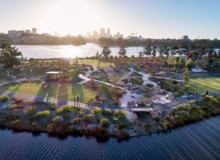
Perth, Australia
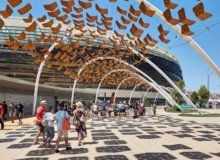
Perth, Australia
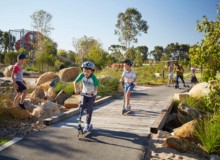
Perth, Australia
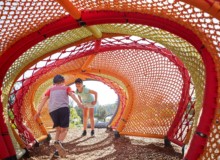
Perth, Australia
Photo: Robert Frith (Acorn Photography)
Tags in this photo:
Overhead structures, Play structures
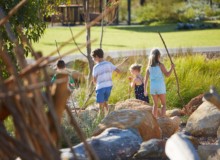
Perth, Australia
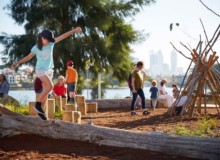
Perth, Australia

Perth, Australia
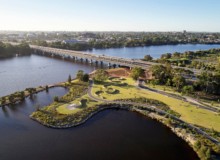
Perth, Australia

Perth, Australia
Project Description
Stadium Park on the Burswood Peninsula in Perth, Western Australia is home to the city’s new Optus Stadium. The 41-hectare precinct provides an engaging waterside environment for the world-class sports and entertainment venue, as well as an impressive array of casual recreational facilities for the community, and visitors, to enjoy year-round.
A major attraction within the precinct is Chevron Parkland, a 2.6-hectare nature-play space that’s designed to engage children with the natural environment and connect them with the indigenous cultural heritage of this land known to the Aboriginal community as ‘Whadjuk Noongar’ country.
At the beginning of the design process, representatives of the Whadjuk people were asked how they’d like their culture to be represented at Chevron Parkland. The Noongar ‘six seasons’ was identified as a suitable theme, and through a close collaboration each season is now interpreted in the parkland’s planting palettes, materiality, educational signage and artwork.
To encourage engagement and creativity, a series of nature-play zones were created offering a mix of structured and unstructured activities – including climbing, balancing, tunnelling and ‘chill-out’ elements. Each zone is separated by indigenous planting, creating a sense of discovery and adventure between activities.
Significantly, the Stadium Park development has rehabilitated this prominent site on the Swan River foreshore – once a waste ground of the city – to provide a collection of scenic promenades, cycle paths, and flexible event and play-spaces filled with landmark public artworks. Thousands of native plants have been introduced, supporting a safe and sustainable public parkland. The capping of contaminants in latent soils, reduction of fertiliser use and bio-filtering of surface water has improved the micro-organisms found in both the soil and the water.
The wider parklands also incorporate a more structured sensory play-space with musical instruments, trampolines and climbing ropes; and a community sports oval is available for public use on non-game days. The design ties the stadium and its landscape surrounds together using a clear network of pathways and plazas, and a sculptural community arbour links the stadium to the new station and the Swan River, connecting the precinct to the city via rail, bus, ferry and the Matagarup Bridge.







